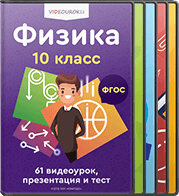Организация класса
Практические задачи:
Проверить готовность классного помещения.
Проверить готовность класса к работе: наличие учебников, тетрадей, дневников на партах.
Сообщить учащимся общие задачи урока и порядок работы на уроке.
Цель урока:
Контроль Present Simple и Present Progressive Tense.
Работа над диалогом «Arriving in Australia».
Повторение темы «Способы выражения будущего времени в английском языке».
Оборудование: карта Австралии, флаг, герб, таблица,
текст (об Австралии), магнитофон.
План урока
Коротко об Австралии
Teacher: Good morning our expensive visitors, mine collegues. We are very glad that you have chosen time and have decided to visit us. Thanks. Today our lesson will be devoted to one of the most perfect country – Australia. We can begin work. Welcome to Australia.
Did you know, for example, that Australia is the biggest island in the world? It is only a little smaller than the United states of America, and it is bigger than Western Europe.
Did you know that Australia is one of the oldest lands in the world? During millions of years, wind and water have slowly taken the earth from the hills and filled the valleys with it. Although there are some mountain along the east coast and some along the west coast, the centre of the country is very flat.
(Работа с картой Австралии у доски).
There are six different states in Australia: Western Australia, Queensland. New South Wales, Victoria, Tasmania and South Australia. There are also two territories: Northern Territory, and Australian Capital Territory, with Canberra, the nation’s capital city in it.
Each Australian state has its own government, and its own capital city. The state capitals are: Perth, Brisbane, Sydney, Melbourne, Hobart and Adelaide.
I think that you have added my story. You know that at the last lesson we have got acquainted with this country slightly. Your home task was to prepare the stall stories about Australia. I think that you with great pleasure tell us about it. Are you ready?
(Работа у доски. На ней рисунки: флаг, герб, государственный день).
Student 1: Australia is the only nation that occupies a whole continent. It’s an island of 7. 7 million square kilometers. It is the sixth largest country in the world after Russia, Canada, China, the United States of America and Brazil. It’s located to the south of Asia, between the Pacific and Indian oceans. Australia is the flattest continent after Antarctica. It is also the world’s driest continent.
Student 2: Australia’s coat of arms – the official emblem of the Australian Government – was granted by King George V in 1912. The arms consist of a shield containing the badges of the six states. The supporters are native Australian fauna – a kangaroo and an emu. A yellow - flowered native plant, wattle, also appears in the design.
Student 3: Australia’s national day, Australia Day, on 26 January marks the date in 1788 when Captain Arthur Phillip, of the British Royal Navy, commanded a fleet of 11 ships and sailed into Port Jackson (Sydney Cove).
Student 4: The flag of Australia is the only one to fly over a whole continent. The small Union Jack represents the historical link with Britain, the large seven - pointed star represents the six States and the Territories, and the small stars form the Southern Cross – a prominent feature of the southern hemisphere night sky.
Student 5: Australia is a continent, a country and an island all at the same time. It is the sixth largest country and the smallest continent in the world. Australia is located in the southern hemisphere. That is why it has summer when we have winter and it has winter when we have summer. It is interesting to know that January is the hottest month in Australia.
Student 6: Australia is situated south of Asia, between the Pacific and the Indian Oceans. Australia is the world’s driest continent. Huge areas of land are so dry that they are uninhabited. There are rainforests in the north, snowfields in the sound - east, desert in the centre and fertile croplands in the south and south - west. Australia is also the flattest continent after Antarctica.
Student 7: Australia is a very urban. About 70 per cent of the population lives in the 10 largest cities. Most of the population is in couth - eastern corner of the country and only per cent of the population live in rural areas. Canberra is the capital of Australia. It is not the biggest city. Sydney and Melbourne are much larger. The land of Tasmania is separated from the continent of Australia. It is an island - state.
Student 8: Australians love their wildlife. The Australian government pays a lot of attention to the preservation of the environment. In the past many trees had been cut down. The government plans that by the year 2000 one billion new tress will have been planted. They have already planted 550 million tress. Now tresses are being planted all over Australia.
Student 9: Australia’s official language is English. Australia English does not differ significantly from other forms of English, although some expressions are unique to Australia.
Teacher: Australian English. What language do you Australians speak? English of course. Well a kind of English anyway. Don’t be surprised if you can’t understand everything they say. But don’t worry about it. Australian English isn’t really very difficult. A lot of words are made by shortening English words. The others are popular Australian words that some people use all the time. Look through the list. You’ll see that most of them are very short. That’s typical Australians always prefer to use one word rather that two. And they always choose a short word if they can. That’s what gives «Strine» (Australian English) its special style – informal, friendly and often very funny.
Весь материал – смотрите документ.

 Получите свидетельство
Получите свидетельство Вход
Вход












 Урок английского языка "Добро пожаловать в Австралию" (81.5 КB)
Урок английского языка "Добро пожаловать в Австралию" (81.5 КB)
 0
0 2000
2000 188
188 Нравится
0
Нравится
0


